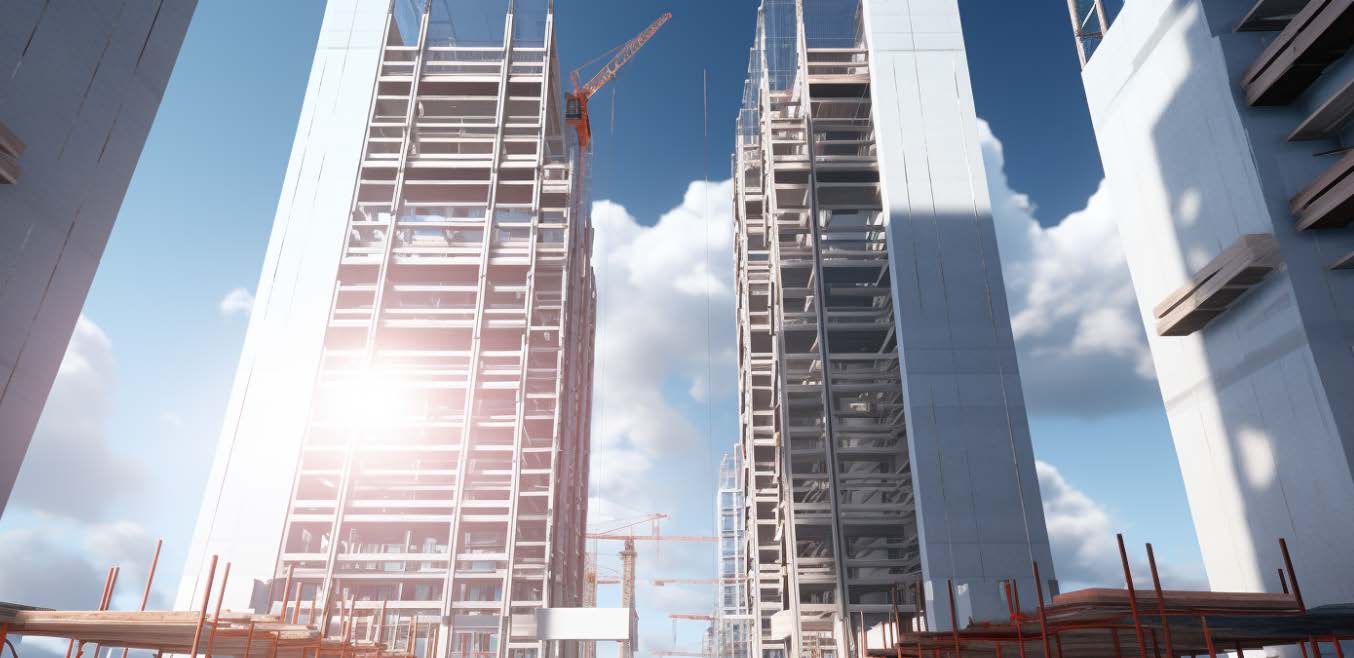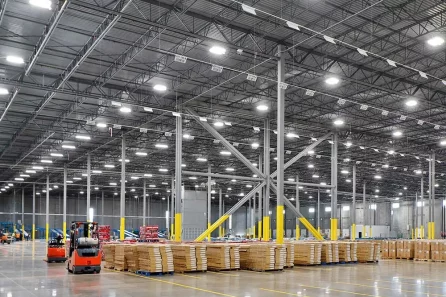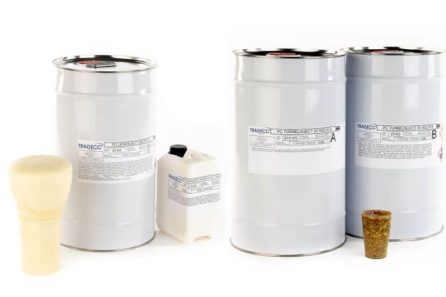The Building Safety Act: Leveraging legislative change to drive best practice and accountability in façade design and delivery.
These are interesting times. Transformative. Fast-paced. Exciting. But how do we balance the sometimes conflicting challenges of constructing buildings that are sustainable, high performance, low maintenance, safe, resilient, affordable, and relevant?
Furthermore, we must do so while ensuring that our projects are not only compliant with existing legislation, but also anticipate potential future regulations, such as the recent changes to the Building Safety Act.
 This white paper from our specialist suppliers at ARBO considers how we can address these questions, as well as discussing the recent changes to the Building Safety Act and what they mean for best practice façade specification. We’d like to thank the ARBO team for providing this fascinating paper and its insights, including:
This white paper from our specialist suppliers at ARBO considers how we can address these questions, as well as discussing the recent changes to the Building Safety Act and what they mean for best practice façade specification. We’d like to thank the ARBO team for providing this fascinating paper and its insights, including:
- Dave Black, Director UK Sales, Technical and Export
- Mark Halliday, Divisional Facades & Technical Manager
 The Building Safety Act – What are the changes and what do they mean?
The Building Safety Act – What are the changes and what do they mean?
In 2022, the Building Safety Act (BSA) received a complete overhaul, making the whole construction delivery chain more accountable for building safety than ever before. These changes, which came into force in October 2023, are the most substantial in almost four decades. As a direct legislative response to the Grenfell Tower tragedy of 2017, they are intended to put residents at the heart of the design and specification process, ensuring people feel happier and safer in their homes, and restoring public confidence in the construction sector.
These changes follow on from the recent Fire Safety Act reform, and though they have implications for all buildings and across the entire construction sector, they place specific controls on residential buildings of 18 metres* or more in height, and those with multiple dwellings. The changes to the BSA can be broken down into five main categories – namely: Scope, Competence, Information Management, Accountability, and the “Gateway” concept.
SCOPE
While the responsibility for competence affects all building projects that have not been sufficiently progressed before 6th April 2024, and the new best practice requirements throughout the sector regardless of any mandatory duty, it is important to understand whether your project comes under the new controls of the Building Safety Regulator.
Questions to consider include:
-
Is the building more than 18m* in height?
-
Does it have seven or more storeys and two or more residences?
-
Is it student accommodation, a hospital, or a care home?
If you answer yes to any of these questions, the building is considered a ‘high-risk residential building’ (or HRRB) and will be subject to the full weight of the new guidelines.
* Excluding Scotland
COMPETENCE
The Act lays down a legal requirement to ensure the competence of all parties involved in the project. The competence of clients, designers, and contractors must be established, verified, and documented at all stages of design and construction, ensuring compliance with Building Regulations. Principal Designers and Contractors bear the responsibility to complete the job competently – it is important to note that Lead Architects here take on the role of Principal Designer and should be well acquainted with all changes to the Act.
INFORMATION MANAGEMENT
The ‘Golden Thread of Information’ is a cornerstone of the revised BSA. In simple terms, this is the audit trail of a project from conception to completion. Crucially, the ethos is that the design and construction phases serve the occupied phase of the building, with the ultimate goal being that the building can be effectively managed aligned to the requirements for its purpose and the design and specification intent. The goal is healthy, aesthetic, and safe buildings, with lifespans that extend far into the future.
Key to achieving that goal is the provision and effective handover of accurate and relevant information at all stages. It is important to consider how you will plan, manage, and monitor your project throughout its design and construction and how you will document that process in a meaningful way that will enable effective legacy management of the asset. Effective and collaborative information management and storage solutions are crucial.
Can your information be accessed easily and digitally? Can the Accountable Person (i.e. landlord, freeholder) access and interpret this information further down the line, once the building is occupied? Clarity, accuracy, and accessibility are all key elements of this obligation.
ACCOUNTABILITY
Directly linked to competence, the new regulatory changes refer to Duty Holders (Principal Designers/Principal Contractors) who are responsible for building safety and may be penalised for non-compliance. This accountability applies to all buildings, not only those outlined in the Scope and controlled by the Building Safety Regulator. It is important to note that Duty Holders must be appointed for ALL projects.
This accountability extends beyond completion to the period of occupancy, and in accordance with the Building Safety (Leaseholder Protections) (England) Regulations 2022 and Schedule 8 of the Act, financial responsibilities of certain long leaseholders concerning remediation costs must be made clear.
All existing buildings over 18m* or 7 storeys, with two or more residences, should have been registered with the Building Safety Regulator (BSR), and the BSR is now rolling out a three-year plan to assess all such buildings on a priority basis.
* Excluding Scotland
THE GATEWAY CONCEPT
Firstly, the Act’s new Gateway approach limits the choice of Building Control provider for all buildings in scope, with projects submitting Building Control approval applications direct to the BSR, and the BSR now in a position to issue building assessment certificates. This new system is much broader in its demands than the previous regime and demands that the Duty Holders’ state much more clearly how the building meets requirements.
Alongside the Golden Thread, Gateways 2 and 3 are the biggest changes to the BSA. Together, they mandate that the design, construction, and operational phases be considered as a joined-up process before a project can commence. Gateway 2, for example, involves a full application for HRRBs, including competence, fire safety, control measures, and mandatory reporting.
Meanwhile, Gateway 3 requires the receipt of a completion certificate, which will not be granted if the building falls short of its earlier approved plans. These gateway stops are impassable without documentation, and without documentation, the building cannot be occupied.
All this is intended to raise the standards, and improve management information in the construction industry, making the sector accountable for occupied buildings and their inhabitants. Failure to comply is much more than a compliance issue, as any failings could result in a building that cannot be occupied and therefore cannot recoup its build costs.
 How can we make facades better and why should we?
How can we make facades better and why should we?
The UK has a rich architectural heritage, with buildings that have stood the test of time for centuries. Much of that built environment legacy would come nowhere near passing contemporary building regulations, but it was built for a different time, when environmental and safety considerations were not high on the agenda. Contemporary construction projects, however, face different definitions of anticipated service life and sustainability – with the facade quite literally being at the forefront of such concerns.
A building facade system, aside from its aesthetic impact, is designed for weather resistance and equipped with thermal, acoustic, fire, and impact resilience. In the wake of challenges like RAAC concrete and combustible cladding, we know relying solely on existing compliance standards is insufficient. Specifiers must focus on the longevity and sustainability of facades and select solutions that anticipate future standards in order to ensure superior performance, prolonged service life, cost-effectiveness, and improved environmental credentials.
If we put the residents at the heart of any new building project, it becomes clear that improvements to façade performance should be focused around protecting the building and its occupants. Any facade specification requires a balance between protection from the outside and improving indoor comfort. For example, we want light and air to penetrate the building, while harsher weather elements should remain outside. We want residents to feel protected by the structure, without feeling either sealed in, or exposed. Fundamental to this conversation is the facade membrane and its ability to mediate between external and internal environments.
A good membrane should be able to expel the moisture and humidity generated by everyday living, while retaining the warm air generated from heating, and in doing so, improve the lifespan of the building, along with its energy efficiency. While there is currently no obligation to use class A certified facade membranes, due to a lack of available A1 systems until recently, it is now possible to specify a Class A certified membrane. Consequently, this has now become best practice and, in combination with high-quality sealants, insulation cladding, and other auxiliary materials, membrane specification should aim to meet class A2-s1, d0, or class A certification (as stipulated in the recent updates to the Building Safety Act 2022). This not only aligns with the competence and accountability principles of the HRRB guidelines, but also anticipates any further tightening of regulations, futureproofing the building.
In addition, transparent or translucent membranes can be used as aesthetic materials in their own right, creating striking visual effects, as in the case of the English National Ballet School (RIBA National Award for Architecture 2021), where ARBO sealants were used to give the building a translucent and lightweight effect while offering glimpses of illumination into the movement at the building’s core.
The recent updates to the Building Safety Act are intended to improve the integrity of the construction industry as a whole, making the entire delivery chain more accountable for its decisions and actions. Greater transparency is now required from building owners in terms of information sharing and safety measures, and the Duty Holders responsible for building safety and maintenance face more rigid controls, with penalties for non-compliance. It is important to consider the soundness of all materials involved in the construction process, from the foundations to the structural frame right through to the sealant and all elements of the facade. Working collaboratively with the supply chain to discover the latest innovations and how they can enhance the safety, and comfort of your building is critical to both compliance and performance.
 Driving best practice from specification to site
Driving best practice from specification to site
Current building regulations require all buildings that are 18m* tall or more, with seven or more storeys and two or more residences, have facades of class A1 or A2-s1, d0 to BS EN 13501- 1. However, certain facade products fall outside this protocol. Products such as membranes, gaskets, and seals are not bound by the new BSA regulations because at the time there were no products on the market to fit the criteria. This omission in the BSA does not need to translate into an omission in HRRB best practices, and now class A membranes are available, they should be used and understood.
* Excluding Scotland
KEY FACTORS IN DETERMINING MEMBRANE QUALITY INCLUDE:
- Weatherproofing effectiveness
- Fire resistance
- Airtightness
- Vapour permeability
- Durability
- Compatibility with other materials
- Ease of installation
- Compliance with building codes.
But the test data that defines membrane performance, either as a standalone material or as part of a façade build-up, is not always reflected in its in-situ performance as an installed element of a completed façade.
This is where the changes to the BSA reflect the need for a cultural shift in decision making for specifiers. The proven performance of the membrane on a data sheet or BBA certification is no longer sufficient to represent true due diligence. The updated BSA criteria of competence, accountability, and information management means that greater scrutiny is required when it comes to installed performance. In essence, how likely is it that the system or products chosen will offer the buildability and ease of installation required to deliver the specified performance when the building is under construction and throughout the operational phase?
SPECIFYING BUILDABILITY INTO PERFORMANCE
The journey from specification to installation on site is often paved with interpretation and pragmatism. If the specification doesn’t quite work once the build is in progress, those responsible for making sure that the schedule doesn’t slip will often find a workaround. Overly complex facade build ups using products that require a high level of skill and time to install can often lead to installations that fall short of the manufacturer’s guidelines, often resulting in a performance that falls below the level anticipated at specification.
Simplification might sound like doing less, but reducing complexity – in design, the number of products used, and the speed and difficulty of installation – is the fastest route to improved performance for each element and the building as a whole. If our aim is to build better buildings that are safer, more comfortable, and more environmentally friendly, a best-practice approach to selecting systems that reduce complexity and enhance buildability on site is critical. When it comes to the safety and performance of facades, this approach not only underpins compliance and quality at completion, but it also futureproofs the building against further updates to regulations and makes it less onerous to manage and maintain throughout the operational phase.
At ARBO, our focus on reducing the complexity of façade build-ups and combining that imperative with the need for safer, non-combustible facades has led to the development of our ARBOShield Pro® External Perimeter Class A Membrane (EPAM) ®; the only class A rated self-adhesive external window and perimeter seal membrane available to UK specifiers. Not only does this external perimeter seal membrane provide an effective airtight, vapour permeable seal at critical junctions, such as window and door apertures, but it also reduces complexity and enables easier, more consistent installation, delivering predictability of performance across all quality and safety criteria.
The benefit of best practice specification
Architects and specifiers are the catalysts for change in the construction industry. Long before legislation catches up, it is specifiers who drive best practice in delivering better, safer, and more environmentally responsible buildings.
But not all the choices a specifier selects are carried forward to the finished building. In the real world, commercial pressures and an ingrained culture of measuring financial viability based on capex returns rather than whole life costs and legacy value can compromise intended best practice.
The update to the BSA may help to provide the design and specification community with a framework to support best practice specification. The requirements to evidence competence, accountability, and the Golden Thread of Information mean that there are compliance arguments for prioritising safety, performance, and buildability over cost.
But the need to articulate a business case remains. These are challenging times, with the cost of materials and labour, along with strong competition for land and occupiers, adding to the financial pressure to build better for less.
Visit BaseTec for Your ARBO Supplies
Whether you’re tackling a residential build, a commercial project, or a specialist application, ARBO’s trusted range of sealants, adhesives, and primers are available from BaseTec.
Our team is ready to assist you with product recommendations, technical advice, and anything else you need to ensure your project’s success.
Visit our online store or get in touch today to discover the benefits of ARBO products and see why BaseTec is the trusted choice for construction professionals.



